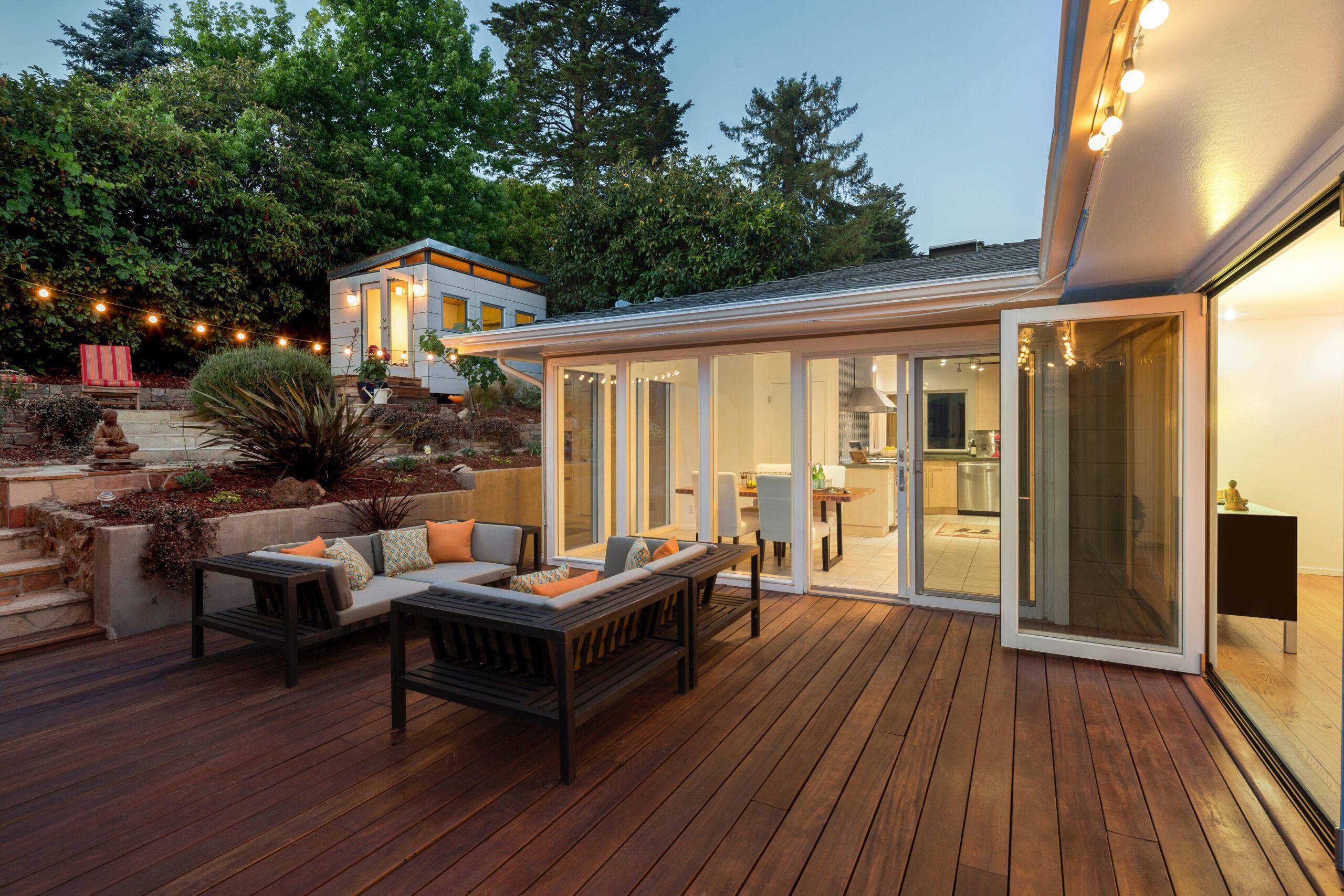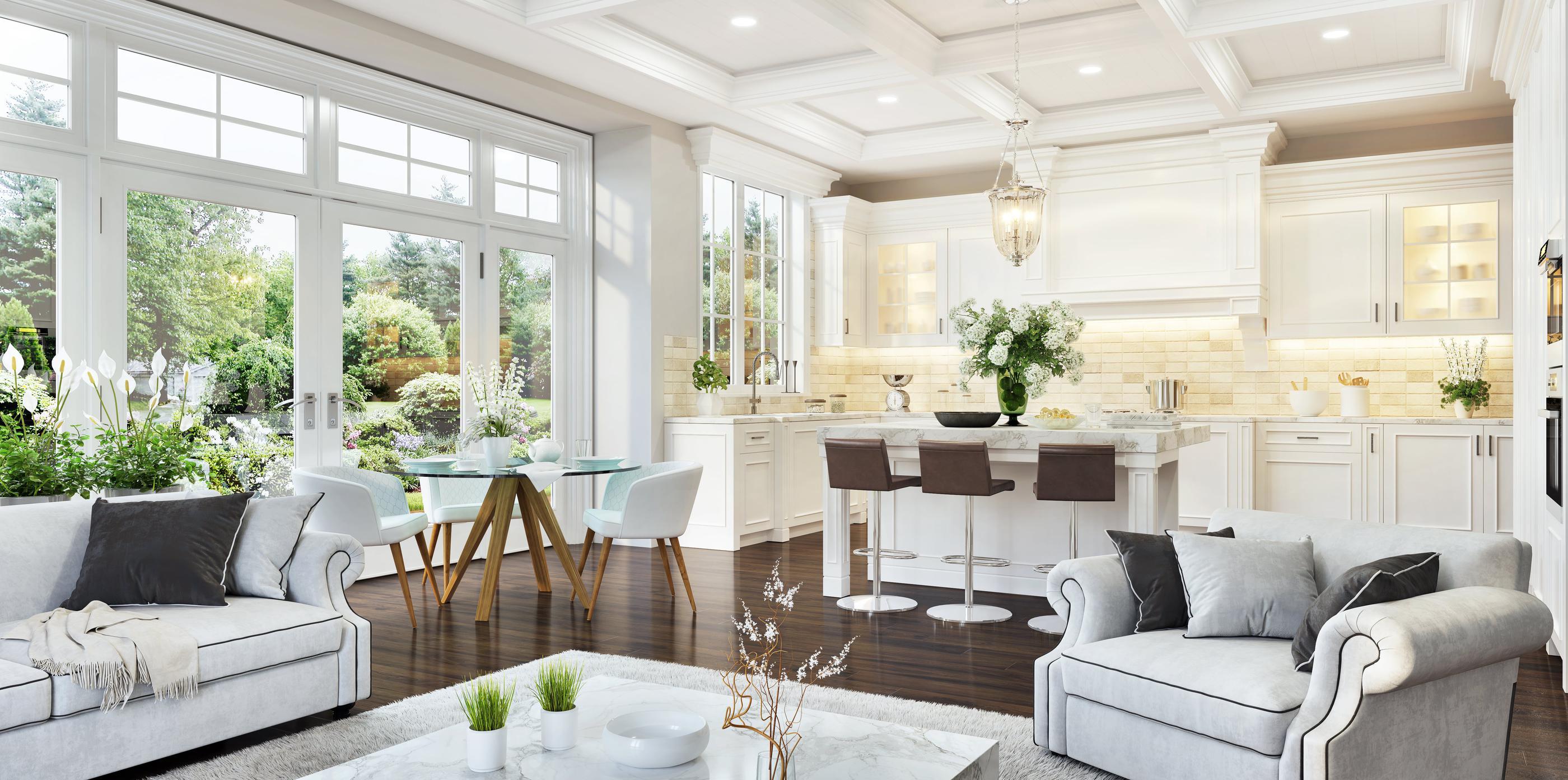If you even halfway suspect it’s time for a deck remodel, it’s worth putting at the top of your home project list. From the outside, a new deck skyrockets curb appeal and even property value.
But for those who live there, a new deck improves quality of life. Increased space and the great outdoors support togetherness, relaxation, and even a healthier lifestyle. Decks are also the foundation of the platinum standard in outdoor living–outdoor kitchens.
Let’s discuss how to choose the right material for your deck remodel. We’ll line up our priorities, share popular options, talk maintenance requirements, and more.
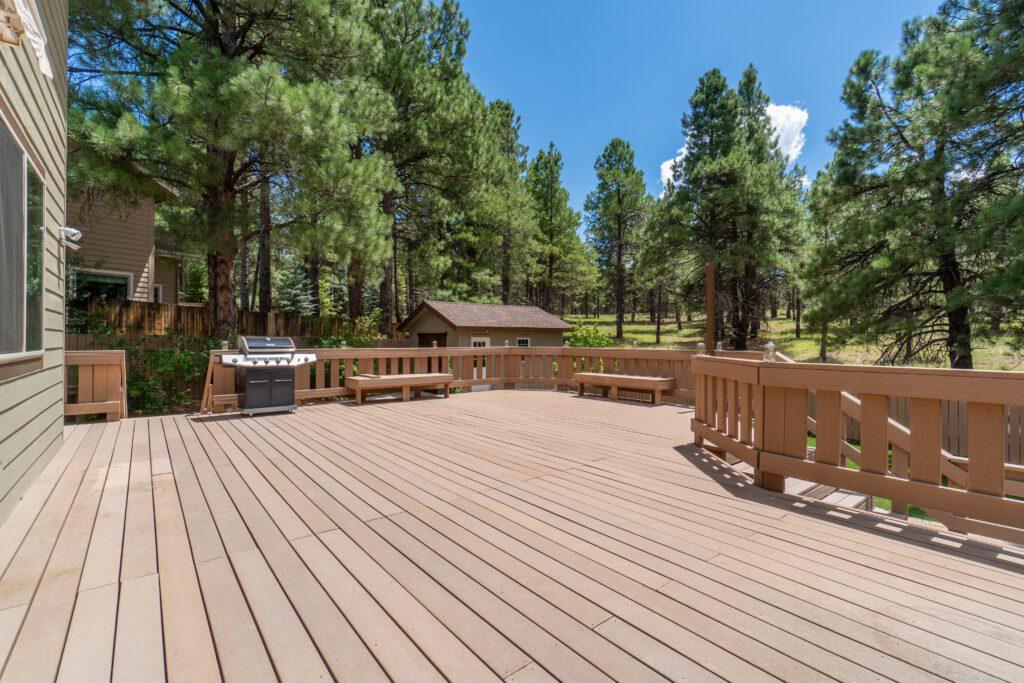
How to choose the best decking material?
Choosing the best deck materials for your home starts with building a hierarchy of needs. This applies to material selection in various areas of the home, like countertops and floors. How you rank cost, durability, appearance, and maintenance requirements will help you decide what material to choose.
Here’s an example of how someone might rank these priorities:
| New deck requirements |
| 1. Maintenance: I don’t want to have to sand, reseal, or stain the deck. |
| 2. Cost: I’m budget-conscious, but willing to pay for the benefit of low maintenance. |
| 3. Durability: I would prefer not to have to replace this deck for a few decades at least. |
| 4. Appearance: I’m confident that a new deck will look great, but not overly invested in the exact color and finish. |
The best deck material for this hierarchy would be composite. But before we get ahead of ourselves, here’s an overview of popular picks.
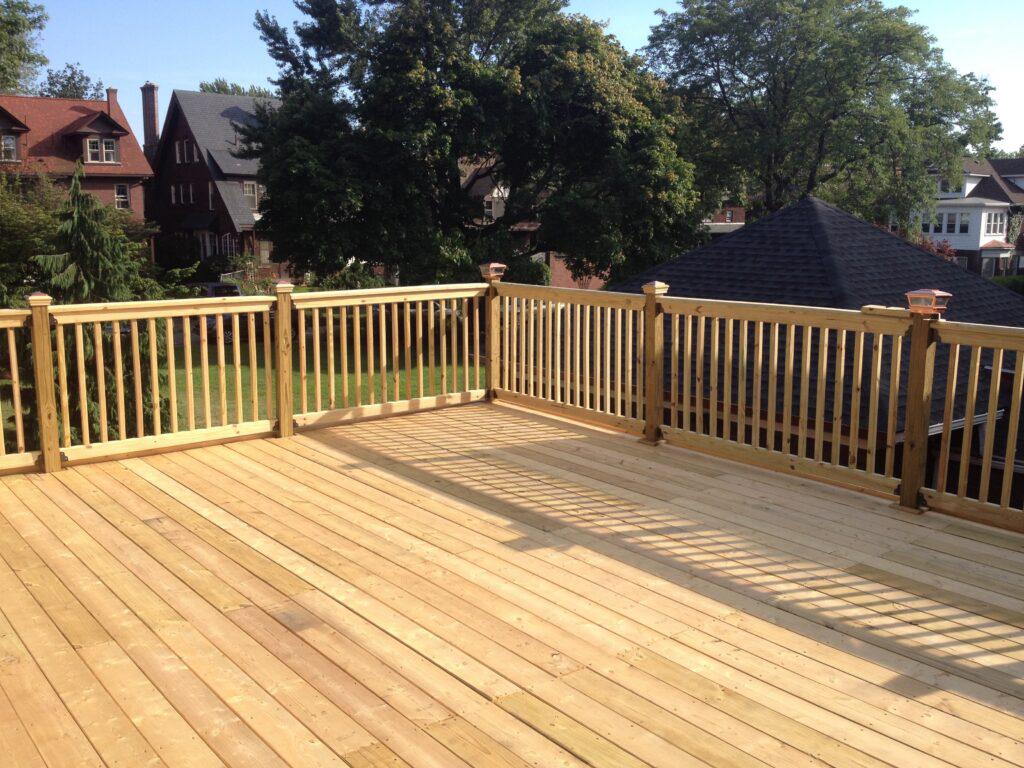
Pressure-treated wood
Accessible, affordable, and natural, pressure-treated wood is a solid, basic option. This material is highly customizable, too, and can take on any color you’d like to stain it. Repairing or replacing a board takes little more than a trip to the closest home improvement store.
That said, you will need to perform maintenance at least once a year. Resealing it against moisture is necessary to meet its typical lifespan of about 20 years.
| Pros of pressure-treated wood decks | Cons of pressure-treated wood decks |
| Classic appearance, can be painted or stained | Prone to warping, cracking, and splintering in many environments |
| Affordable, perfect for many budgets | Annual maintenance, such as resealing, is required |
| Widely available and easy to repair | Not as long-lasting as other materials |
| Moderately resistant to pests and rot |
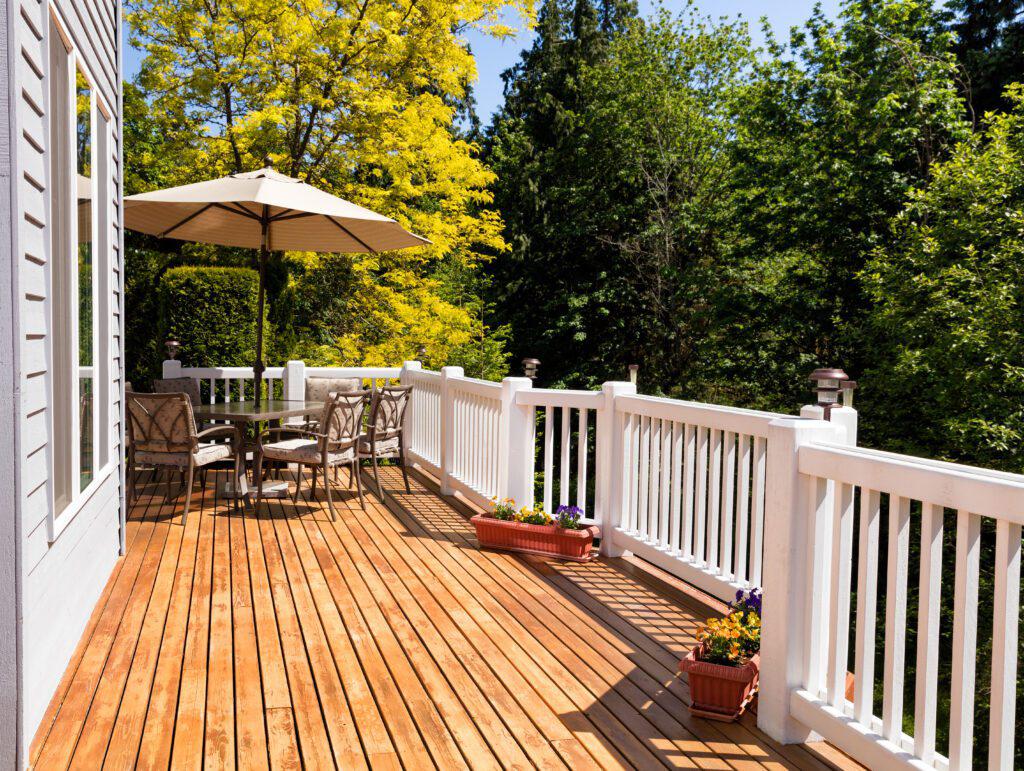
Premium wood and hardwood
From stunning cedar to exotic teak, premium woods for decking are suitable for those who adore (and don’t mind investing in) natural beauty for a backyard oasis. Many aren’t just naturally beautiful; they naturally hold up against moisture and pests.
They’re more durable and longer-lasting than pressure-treated wood like pine, but still require maintenance. You just might get an extra year or two between resealings.
| Pros of premium wood decks | Cons of premium wood decks |
| Can contain natural oils that repel pests | High initial investment |
| Durable and more moisture-resistant than regular pressure-treated wood | Special maintenance required, such as sanding, staining, and resealing |
| Exceptional beauty, even with age |
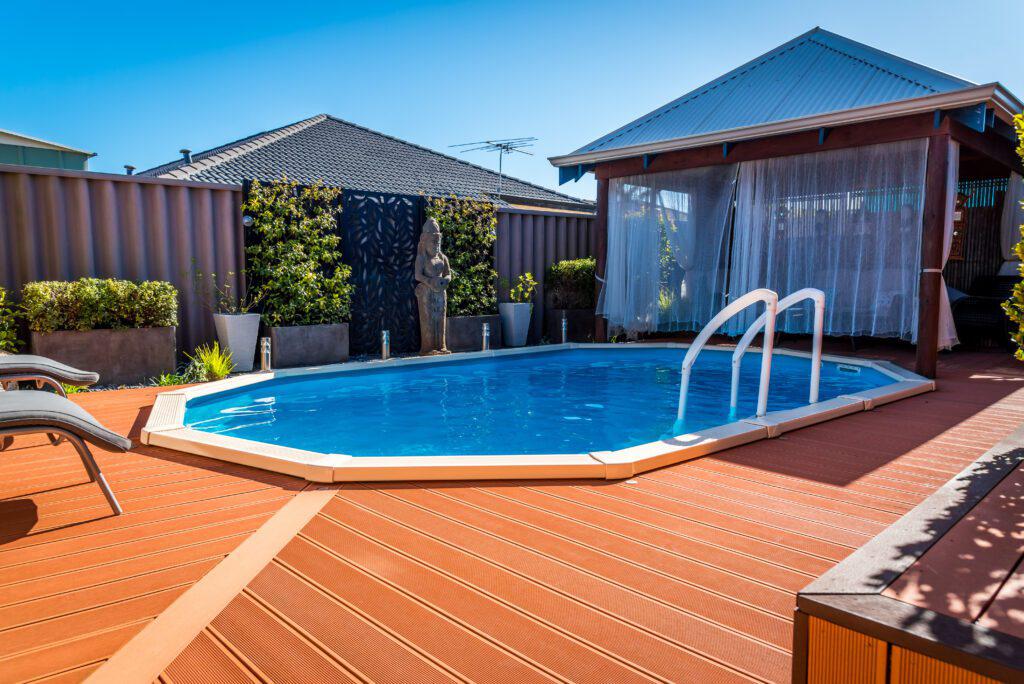
Polyvinyl chloride (PVC)
Today’s PVC decks come with a cost, but pay returns in the form of minimal maintenance and clean looks. Your mileage will vary by manufacturer, with warranties spanning 25 to even 50 years.
PVC is a good choice for moist, humid environments. Those that are super-hot and dry may see the deck become a little brittle before its time.
| Pros of PVC decks | Cons of PVC decks |
| Low to no maintenance | Higher costs, usually more expensive than composite |
| Resistant to pests, moisture, and rot | Surfaces can get hot and may fade in direct sun |
| Attractive, available in many colors and styles | Less eco-friendly than composite |
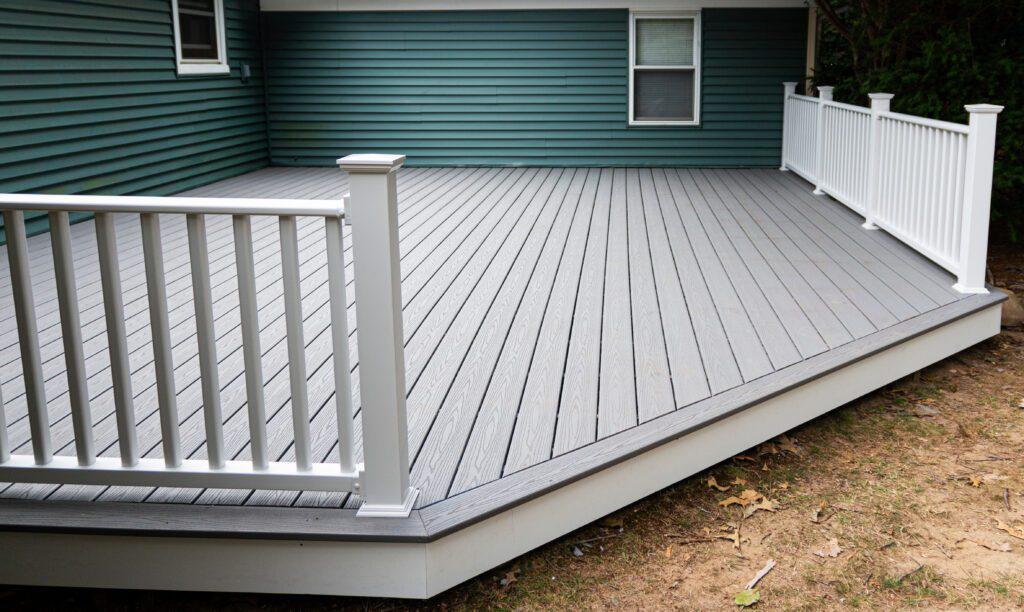
Composite
Wood fibers and recycled plastic come together to create a tough, high-performance deck that’s great for many climates. Composite deck materials require no staining or sealing and won’t splinter or attract pests.
Depending on your location and the deck’s design, it might be a more cost-attentive alternative to PVC. You can enjoy a long lifespan (30 years or more) with an eco-friendlier material.
| Pros of composite decks | Cons of composite decks |
| Low-maintenance and long-lasting | Higher-cost option compared to pressure-treated wood |
| No splinters, pests, or rotting, very durable | May retain heat, can eventually fade with extreme and prolonged sun exposure |
| More sustainable and eco-friendly than other options | Can be susceptible to scratches |
| Aesthetically pleasing, many design options |
Discuss decking with a designer
Plotting the dimensions, staying up to code, choosing materials, setting a budget–deck remodels are not a beginner’s task. If you’re in the early stages and want to speak to a pro who can guide you in the right direction, look no further than The Designery. Your free consultation awaits.

Deck remodel FAQ
Here are some quick answers to some of your most commonly asked questions about deck remodels and materials.
What is better, a Trex or wood deck?
It depends on what matters more to you–budget or longevity. A regular wood deck is less expensive in most cases, but requires annual maintenance.
Even with good maintenance, it may not last nearly as long as a Trex deck, whose warranty can exceed 50 years.
What is the longest-lasting deck material?
PVC and composite are the longest-lasting for the average home, but if you are anything but average, exotic hardwoods win out. In particular, the Brazilian Walnut, known as Ipe, can last for 75 years or more with proper care.
Right behind it is Brazilian Teak with a lifespan comparable to composite.
How to figure out materials for building a deck?
Start by getting a figure for the square footage of your deck. Calculate how many boards will be needed and price them out by material. Add in 10% more than you think you need.
From there, determine the square footage of the frame and the number of joists. Don’t forget to calculate posts and railings, factoring in local building requirements for materials and spacing.
This is general advice that can be used to help create an initial budget for your project.
What deck material is the most cost-effective?
Pressure-treated pine is by far the most budget-friendly material and one of the most popular. However, without attentive maintenance, it may require replacing within 15-20 years.
PVC or composite can be more cost-effective for situations where you don’t want to make further investments in repair or replacement.

